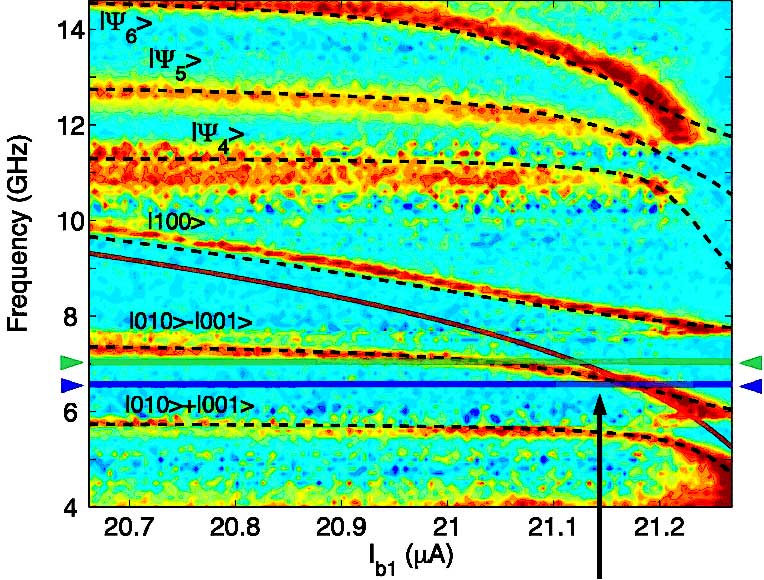Condensed Matter Physics Seminar
2 p.m., Thursday, September 23, 2004
Room 1201, Physics Building
1,2,3 Superconducting Qubits
Fred Wellstood
(Center for Superconductivity Research, Department of Physics, University of
Maryland, College Park)
Abstract: I describe our groupís use of microwave spectroscopy and
time domain techniques to observe the interaction between two coupled
superconducting quantum bits (qubits). Each qubit is a single current-biased Nb/AlOx/Nb
Josephson tunnel junction that is about 10 mm on a side and cooled to 20 mK. We
couple the two qubits together using thin-film capacitors and achieve a coupling
coefficient of greater than 10%. By applying microwaves in the 4-6 GHz frequency
range, we can determine the lowest allowed transition frequencies between energy
levels in the system. We find clear spectral evidence for the existence of an
avoided level crossing when the junctions are in resonance and can compare our
results in detail to what is expected from quantum mechanics. In theory, near
the region of maximum splitting, the upper and lower branches correspond to
transitions from the ground state of the system to symmetric and anti-symmetric
entangled states of the two junctions. The observation of these transitions
provides experimental support for the existence of entangled states of the 2
qubits. Extending the frequency to 4- 14 GHz reveals additional levels due to
the two junctions coupling to a resonant LC (inductor-capacitor) mode formed by
the wires and capacitors used to couple the junctions together. This three body
system can displays an avoided crossing between three levels at a triple
degeneracy point, where the quantum theory predicts entangled states involving
all three systems. Perhaps the most remarkable aspect of these results is that
the two junctions in the system are separated by a distance of about 0.7 mm.
Despite this large distance and the macroscopic number of Cooper pairs
participating in the system, quantum effects are observed. Work funded by the
NSF, DOD and CSR.

Back to Condensed Matter Physics Seminar Home
Page

